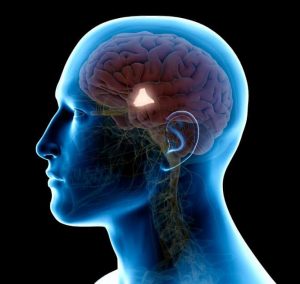Don’t Sweat It! – Part 2
 Last month we discussed the vital role of sweat glands in cooling the human body. I mentioned that when the temperature returns to normal, the sweat glands must be turned off (like a thermostat in your house). But how does this happen? In a recent article, Dr Jonathan McLatchie, Professor at Sattler College in Boston, details the role a particular region of the brain called the hypothalamus. This structure is responsible for maintaining the proper body temperature by balancing heat loss and heat production. The internal temperature readings are taken by specialized neurons of the hypothalamus that detect alterations in the temperature of the blood passing through the brain. We discussed how sweat glands can be initiated to cool the body. But what happens when the body temperature drops dangerously? In this case our biological thermostat initiates different functions. Vasoconstriction, for example, is the process by which blood is shunted away from the surface of the body. Increased muscle activity can also generate heat. When core body temperature approaches 36 degrees C, this is recognizable as shivering. It results in five-fold greater heat production than normal. It is uncanny that research into the hypothalamus should reveal a device that so strikingly resemble our own thermostat. Modern thermostatic control goes back to 1620. Cornelis Drebbel, a Dutch innovator, developed a mercury thermostat that controlled the temperature inside a chicken incubator. Nobody could deny that intelligence was required for such an invention. Yet evolutionists want us to believe that more complex biological machinery inside the human body happened along by chance!
Last month we discussed the vital role of sweat glands in cooling the human body. I mentioned that when the temperature returns to normal, the sweat glands must be turned off (like a thermostat in your house). But how does this happen? In a recent article, Dr Jonathan McLatchie, Professor at Sattler College in Boston, details the role a particular region of the brain called the hypothalamus. This structure is responsible for maintaining the proper body temperature by balancing heat loss and heat production. The internal temperature readings are taken by specialized neurons of the hypothalamus that detect alterations in the temperature of the blood passing through the brain. We discussed how sweat glands can be initiated to cool the body. But what happens when the body temperature drops dangerously? In this case our biological thermostat initiates different functions. Vasoconstriction, for example, is the process by which blood is shunted away from the surface of the body. Increased muscle activity can also generate heat. When core body temperature approaches 36 degrees C, this is recognizable as shivering. It results in five-fold greater heat production than normal. It is uncanny that research into the hypothalamus should reveal a device that so strikingly resemble our own thermostat. Modern thermostatic control goes back to 1620. Cornelis Drebbel, a Dutch innovator, developed a mercury thermostat that controlled the temperature inside a chicken incubator. Nobody could deny that intelligence was required for such an invention. Yet evolutionists want us to believe that more complex biological machinery inside the human body happened along by chance!
Posted on March 2, 2024 by dwoetzel.
